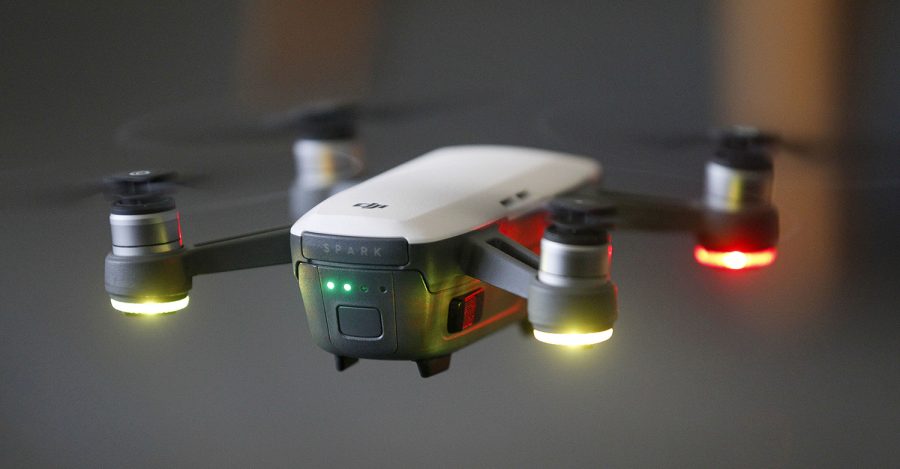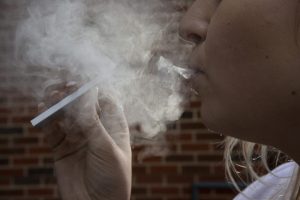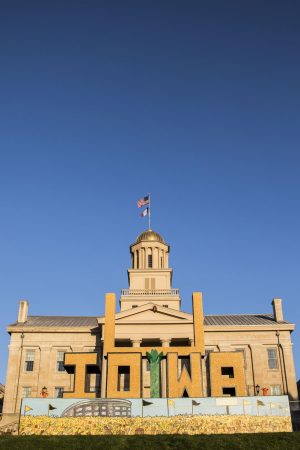Updated approval process makes it easier to use drones on campus
The UI has recently made it easier for faculty, staff, and students to request approval for drone usage on campus.
A small drone descends after Oceanside police officer Mark Bussey aims the "drone killer" at it as he demonstrates the device while in the lobby of the Oceanside Police Department in Oceanside on April 4, 2018.
October 18, 2018
The UI is a no-fly zone for drones, but there are some exceptions to the policy when it comes to research and education.
The Risk Management Office recently updated the approval process for drone use on campus and made it easier for people to put in requests for such operations.
Officials updated the process to make it more efficient, timely, and user-friendly, said Josey Bathke, the chief risk officer at Risk Management. The office updated its website and clarified parts of the policy so people can better understand what is expected in requests.
“The basic idea is that you need to show that your flight, landing, or flying over the property, or use of a university drone, complies with the university mission,” Bathke said.
RELATED: Editorial: More scrutiny needed on drones
On the Risk Management website, there is a list of requirements for drone users to follow when requesting to fly on campus, as well as frequently asked questions for people to use as a reference if information is unclear, she said. When submitting a request, it must be complete and accurate. It also must be turned in all at once, Bathke said.
Most people are approved to use drones on campus, said Richard Hichwa, the senior associate vice president for Research and Economic Development.
The main reason the office has an approval process is so officials know what the drones will be used for and that they won’t be misused, Hichwa said. Officials want to know what the information collected will be used for and that the use will meet the mission of the university, he said.
There are many different areas of research that drones can be used for, said Thomas Schnell, a UI professor of industrial and systems engineering. Some examples are observing fields for agricultural research or observing flooded areas to detect water levels. Drones can also be used to make deliveries to less accessible areas and to take pictures of property to assess damages, he said.
The College of Engineering is interested in teaching students how to program and use drones as well as understand aerodynamics and also to look at aging bridges, roads, and urban developments to observe their structures, Hichwa said.
Drone use could aid research and benefit students in terms of research-assistantship opportunities, Schnell said.
“Most of the flying seen has to do more with media coverage,” he said. “A lot of [drone use] is still in infancy for what offerings are available for students to get involved in.”
Research requests are relatively low compared to requests for taking pictures or filming events on campus, Hichwa said.
The approval process also allows the university to know who is flying over campus to prevent accidents and injuries. Officials want to ensure the drone use doesn’t interfere with other aircraft such as UI Hospitals & Clinics helicopters or airplanes using the Iowa City Municipal Airport, Hichwa said.
“All of this is about safety and security,” Hichwa said. “We want to make sure the privacy of our faculty, staff, and students is protected.”






